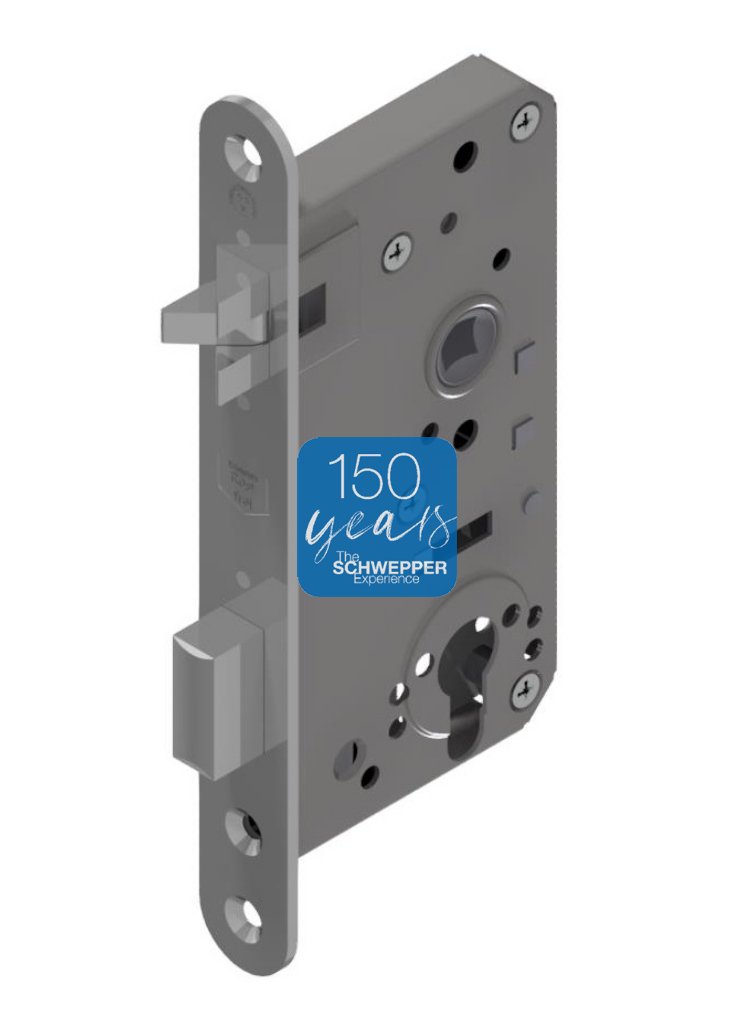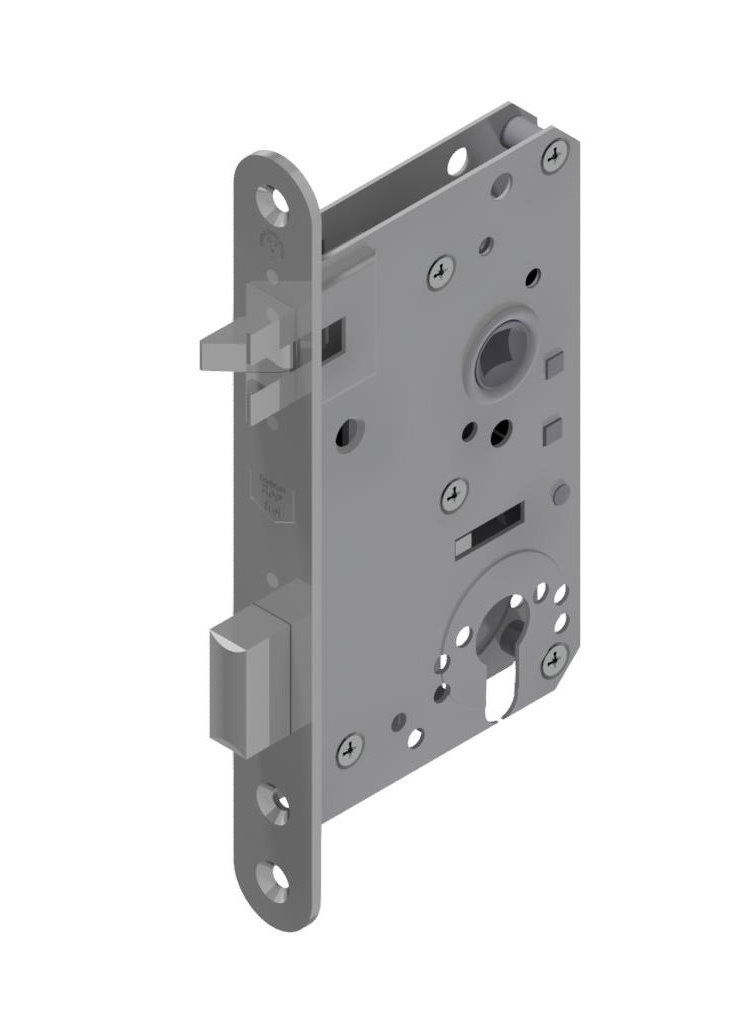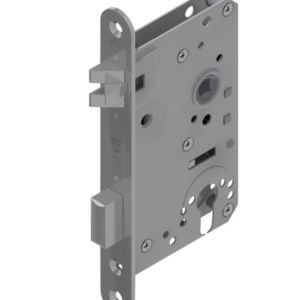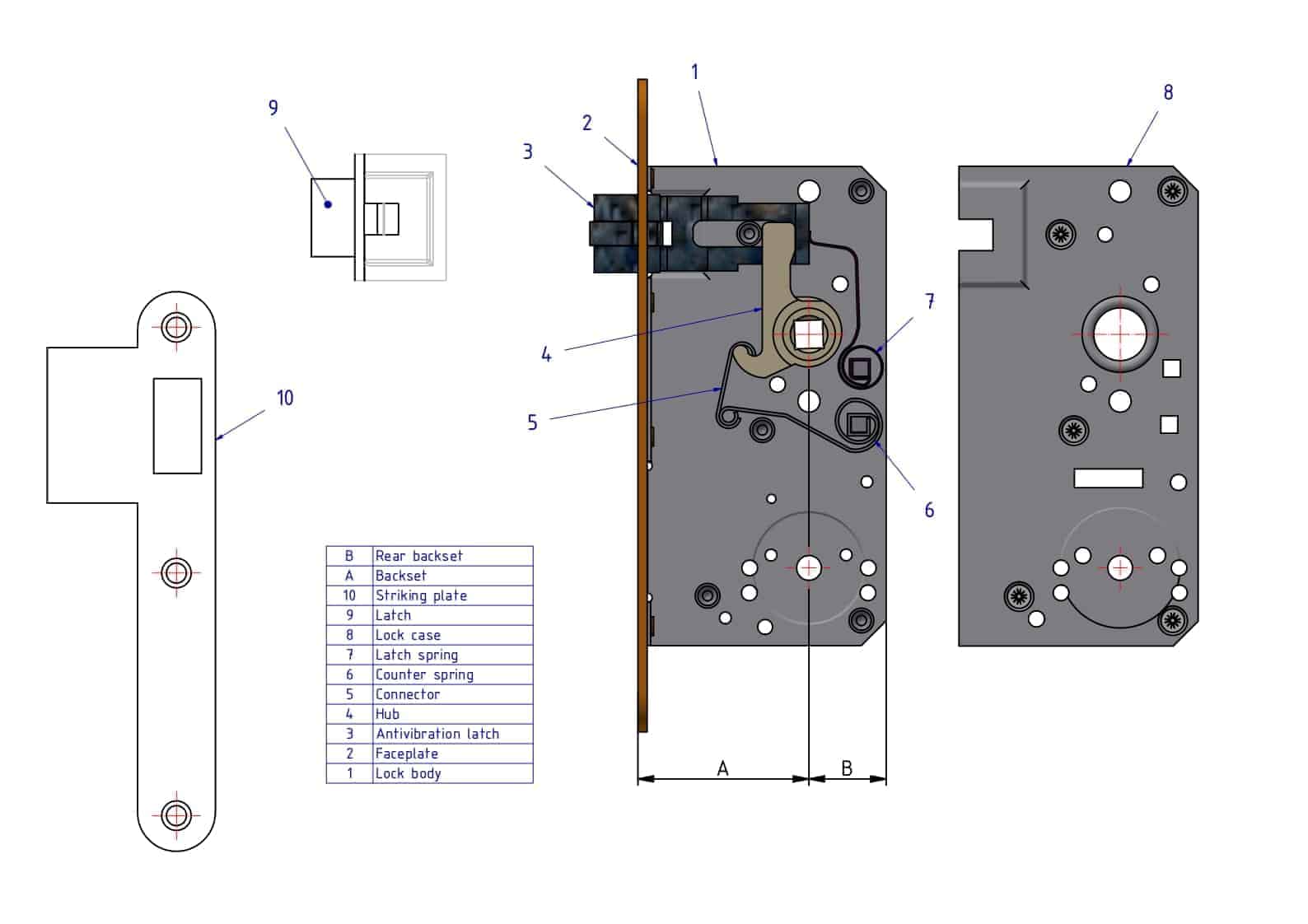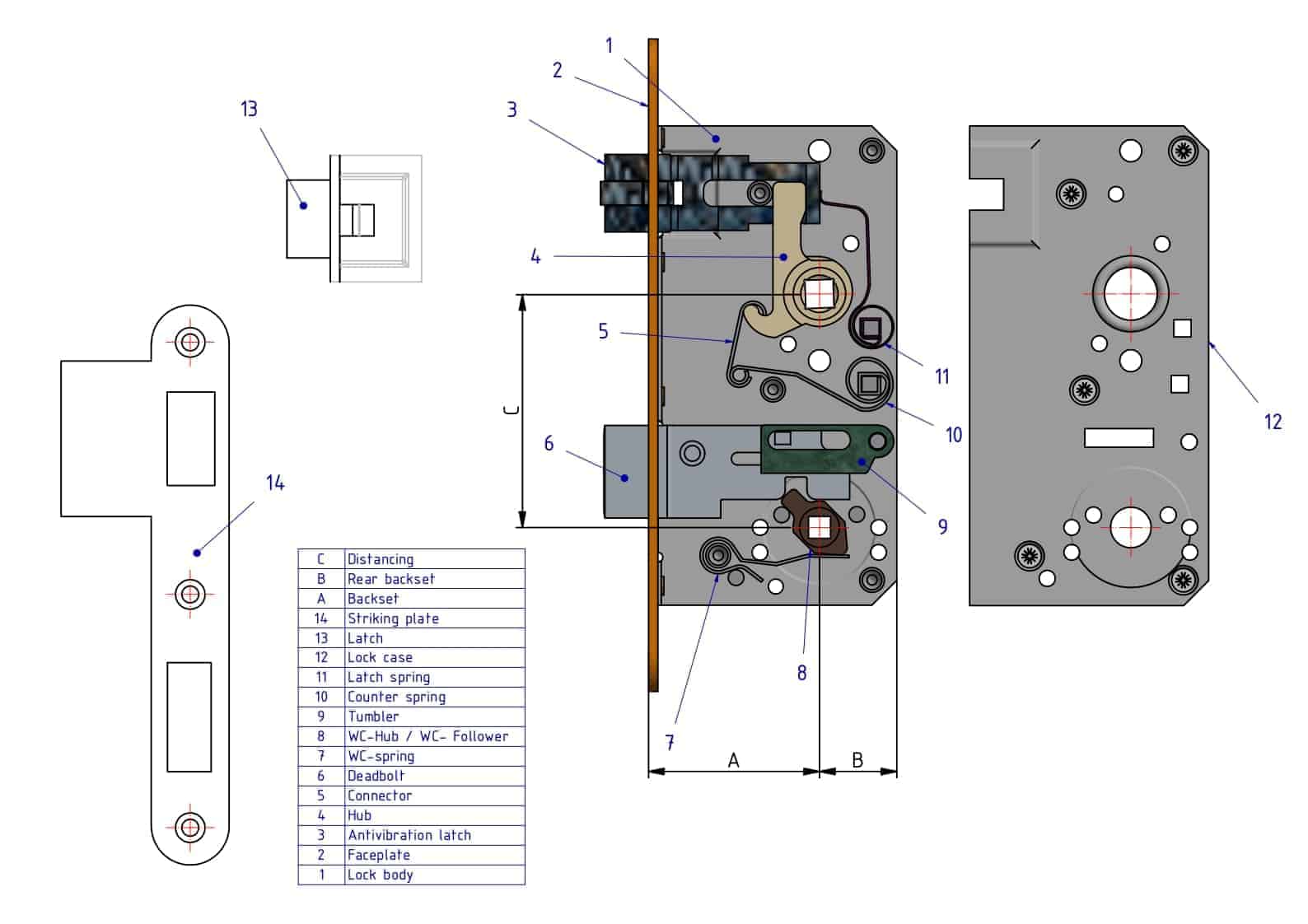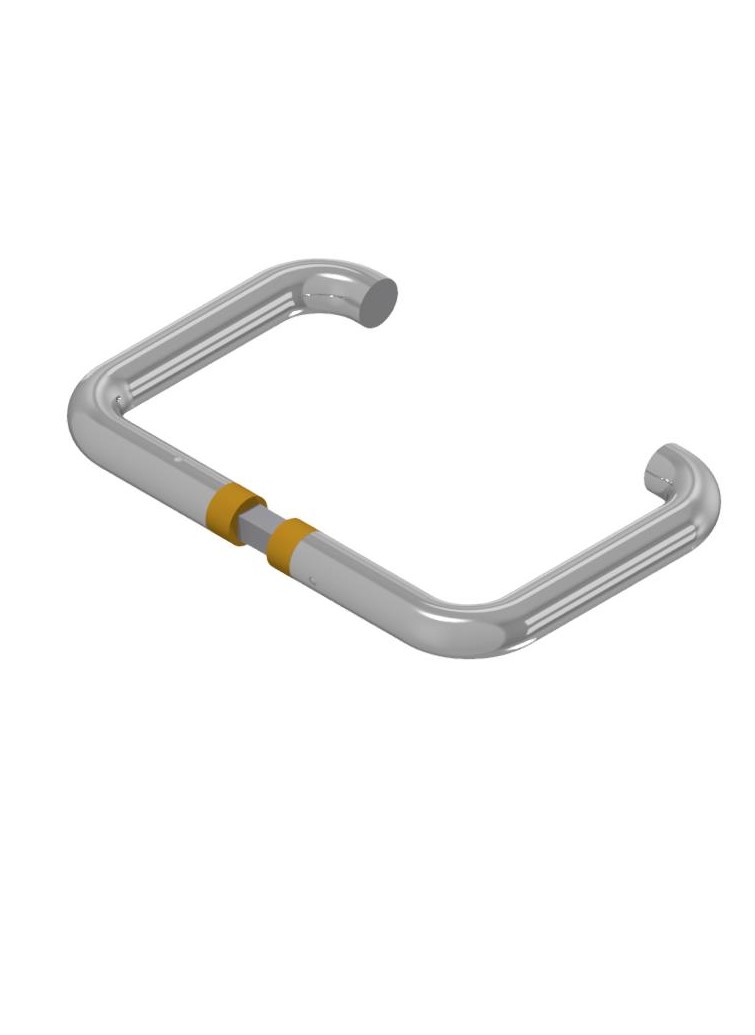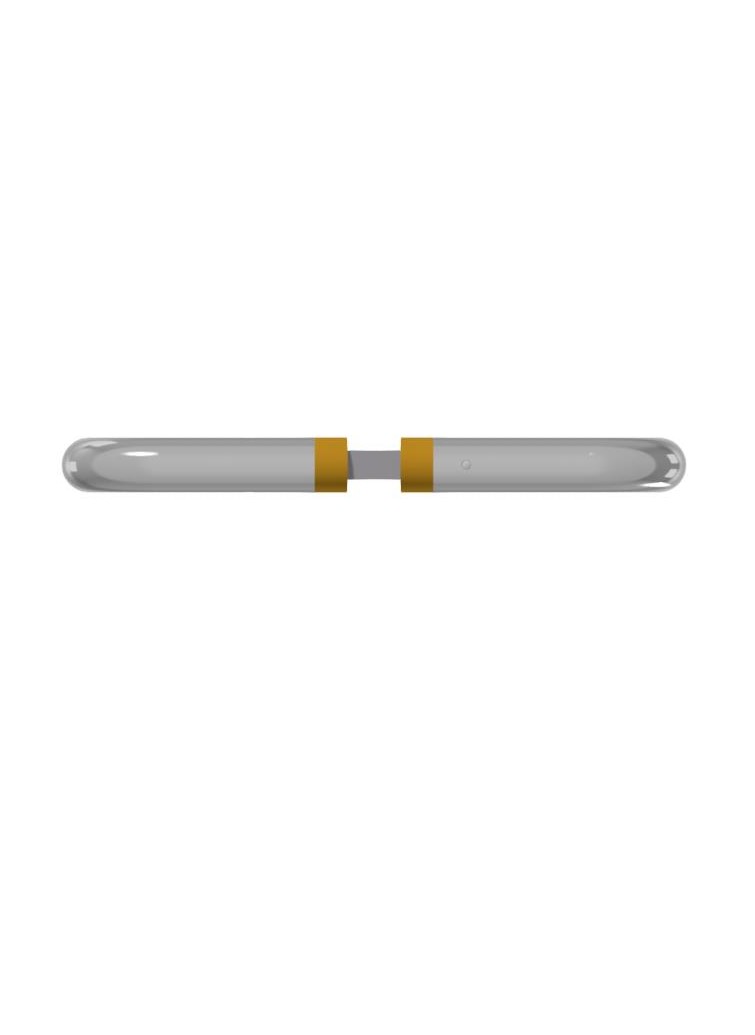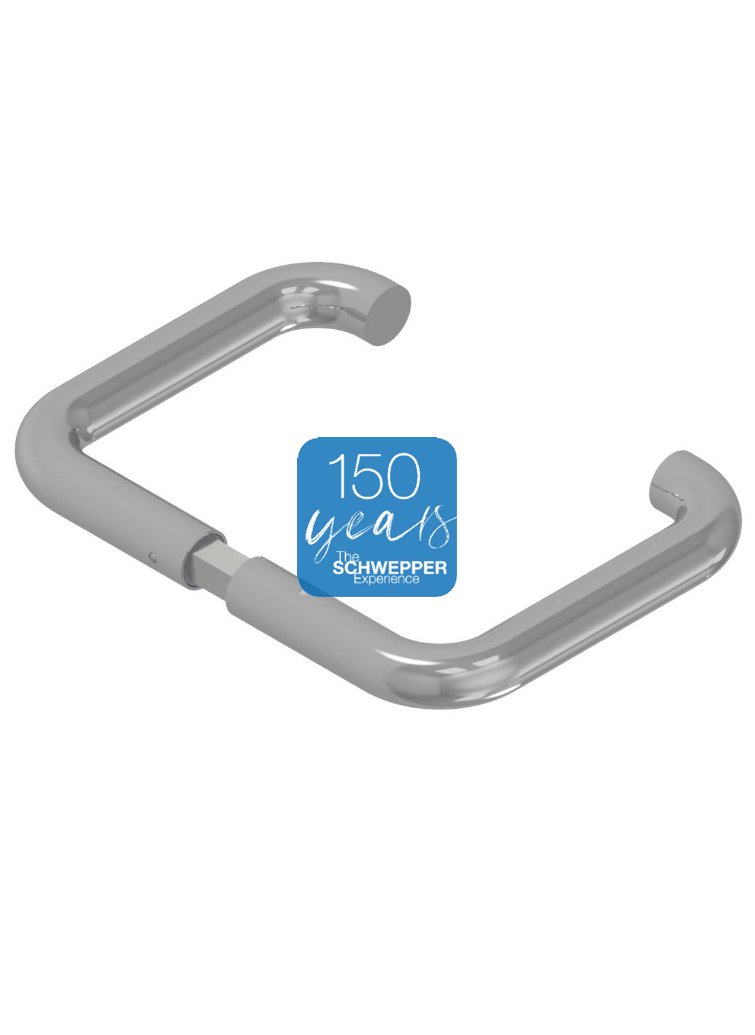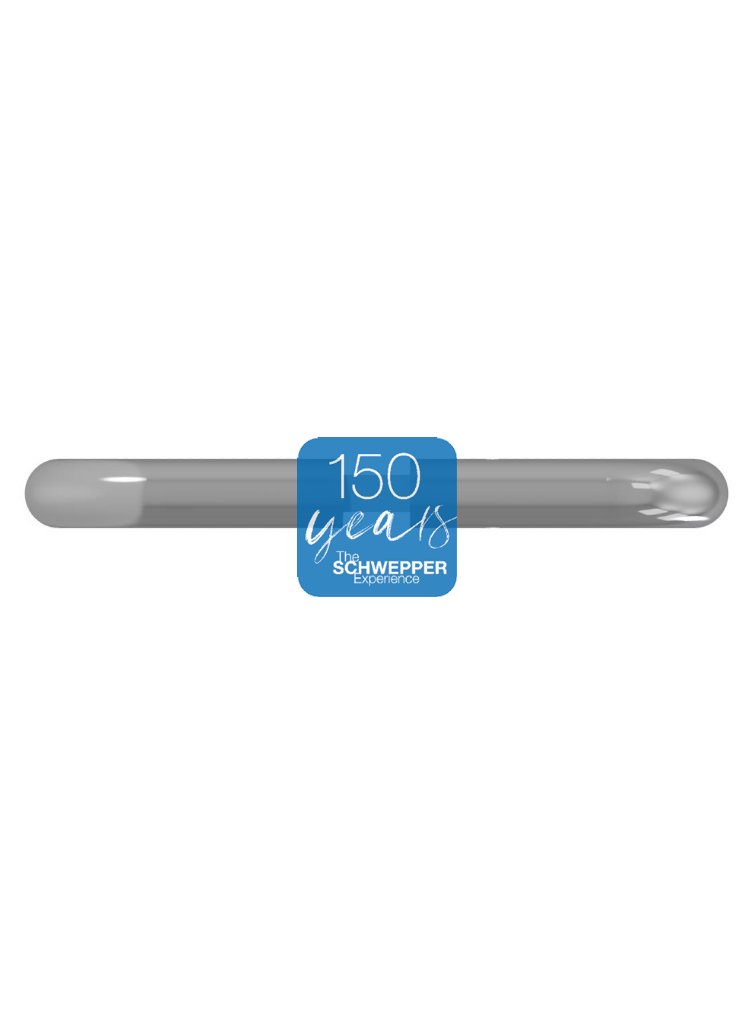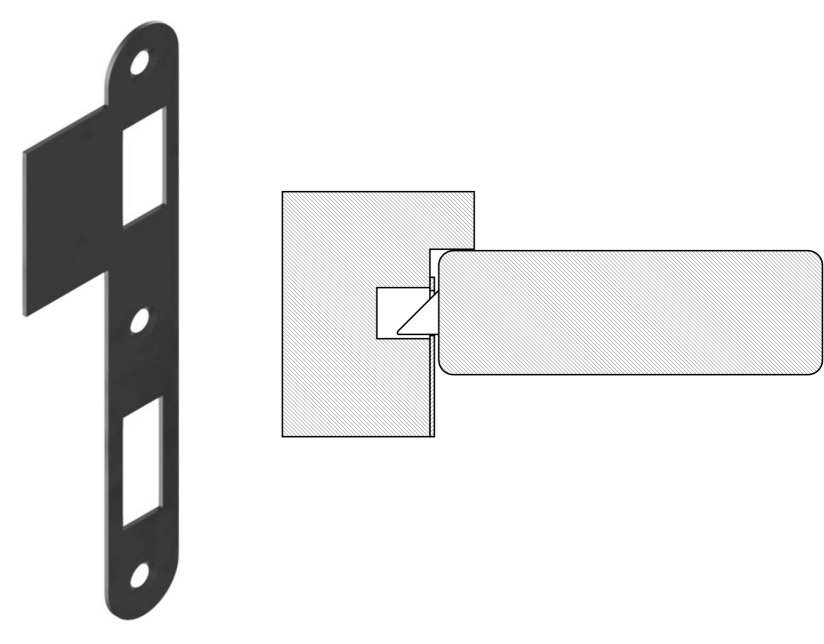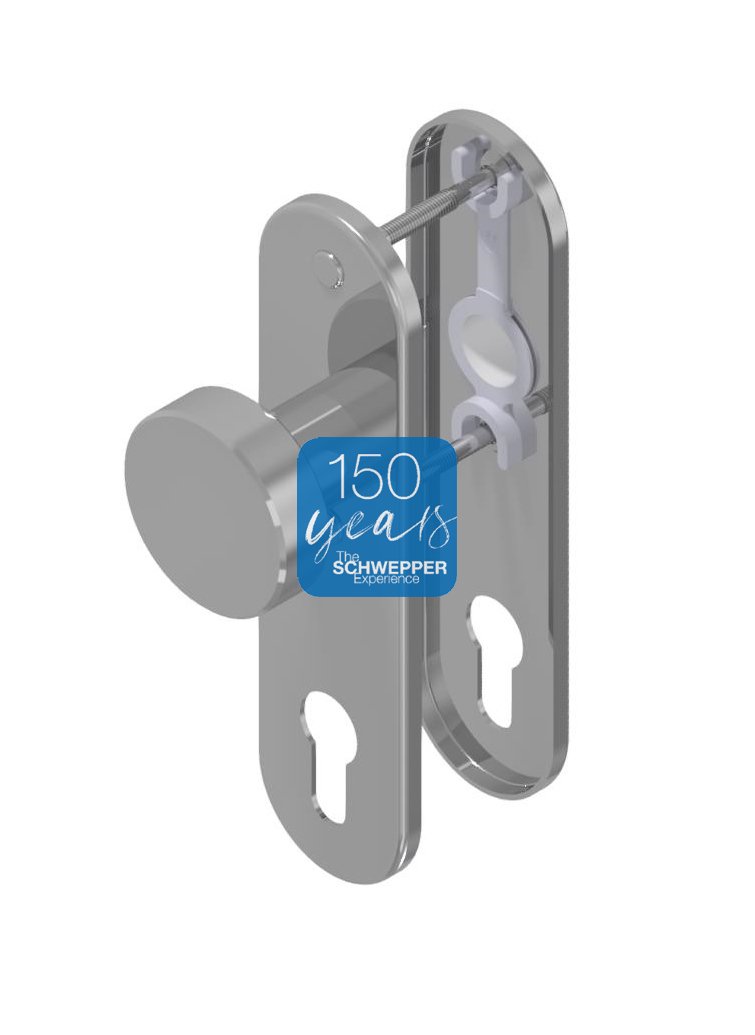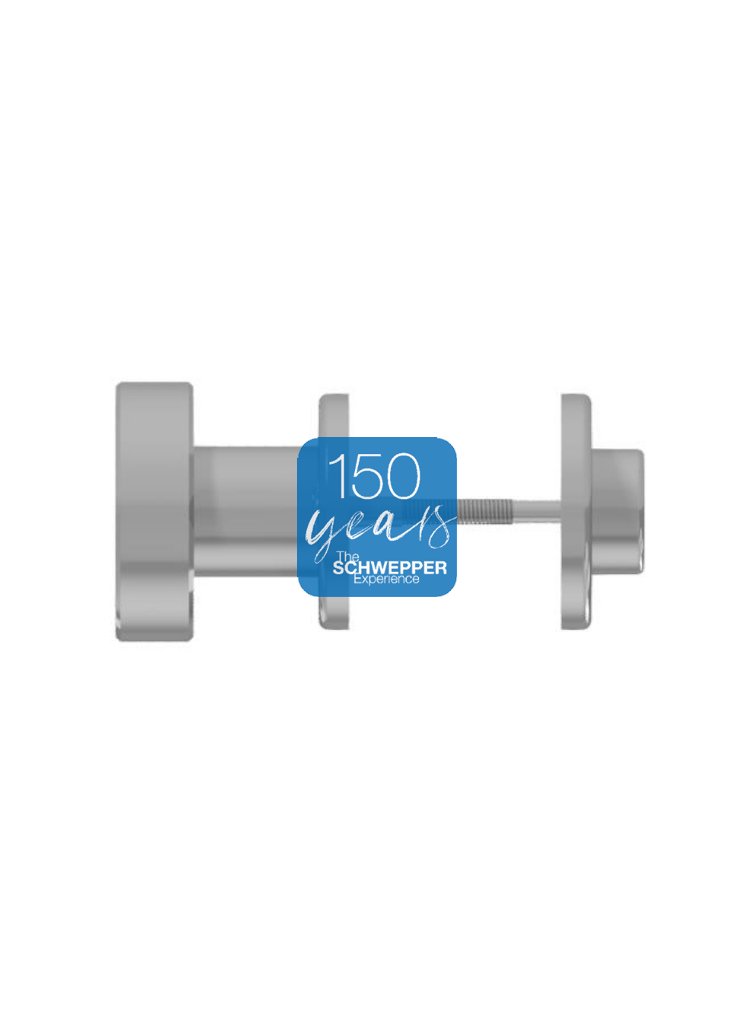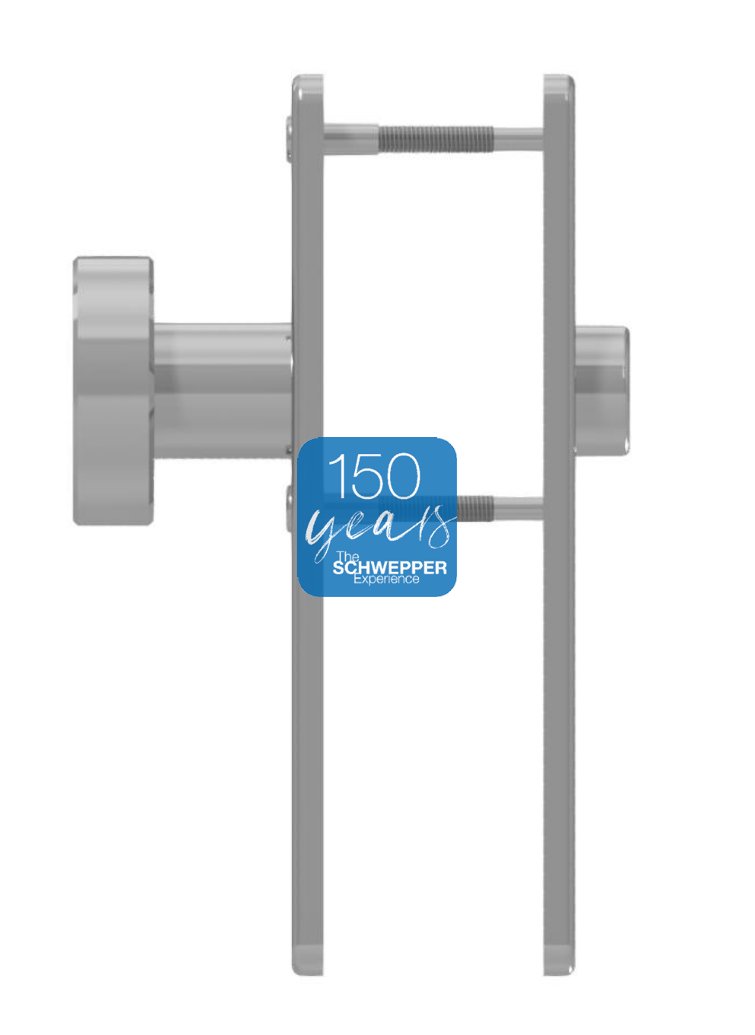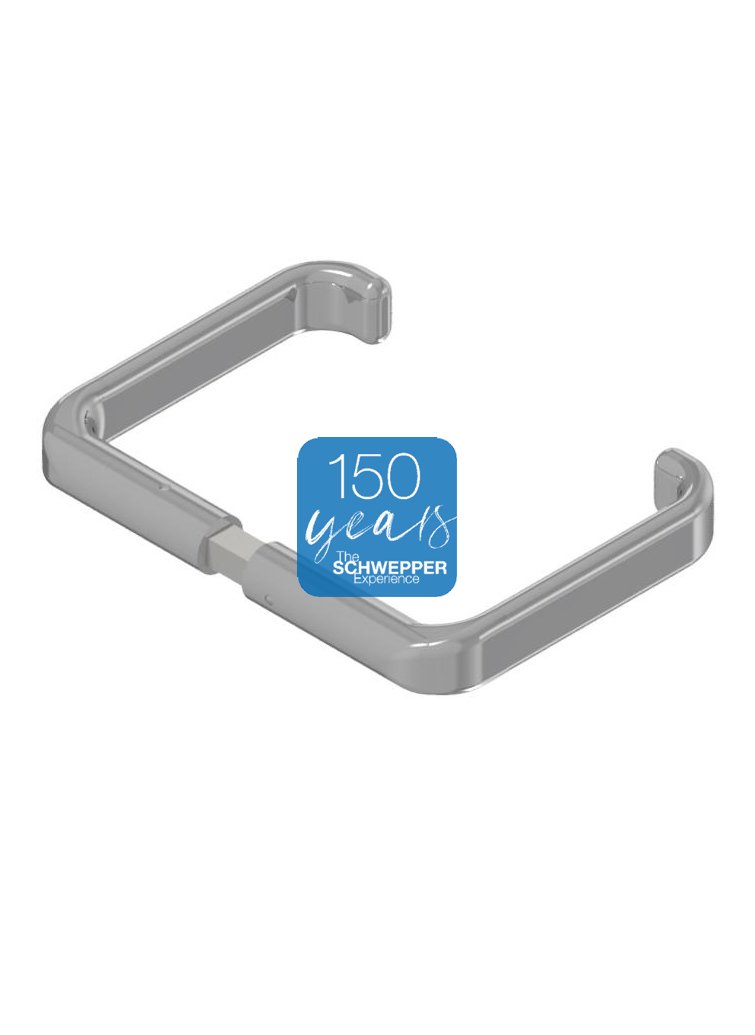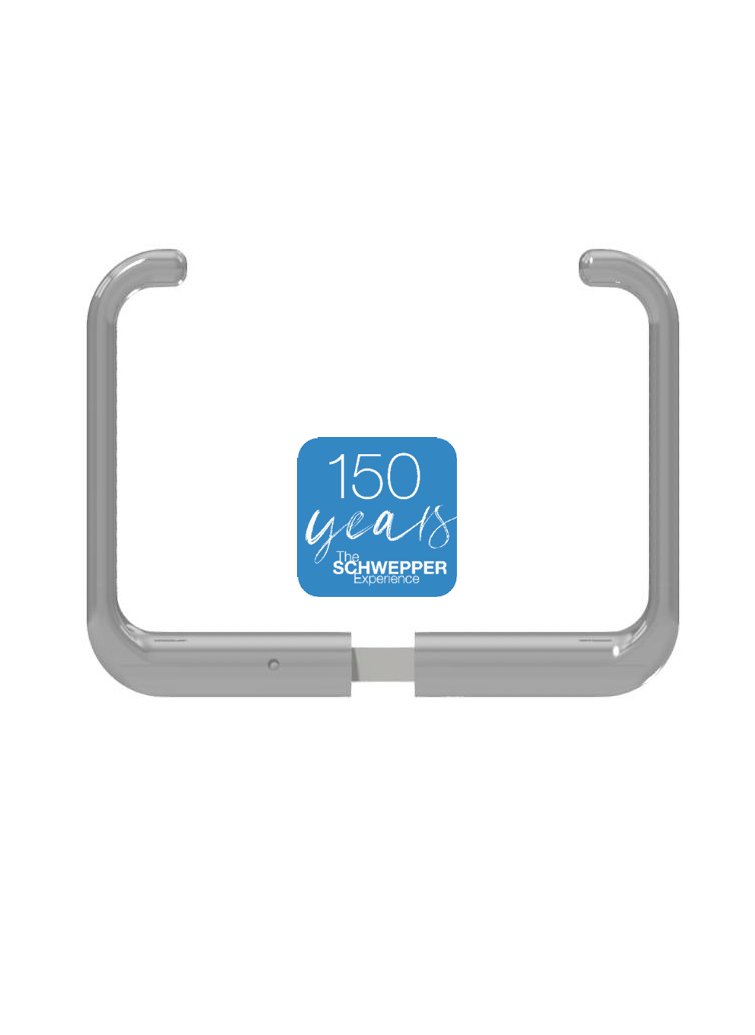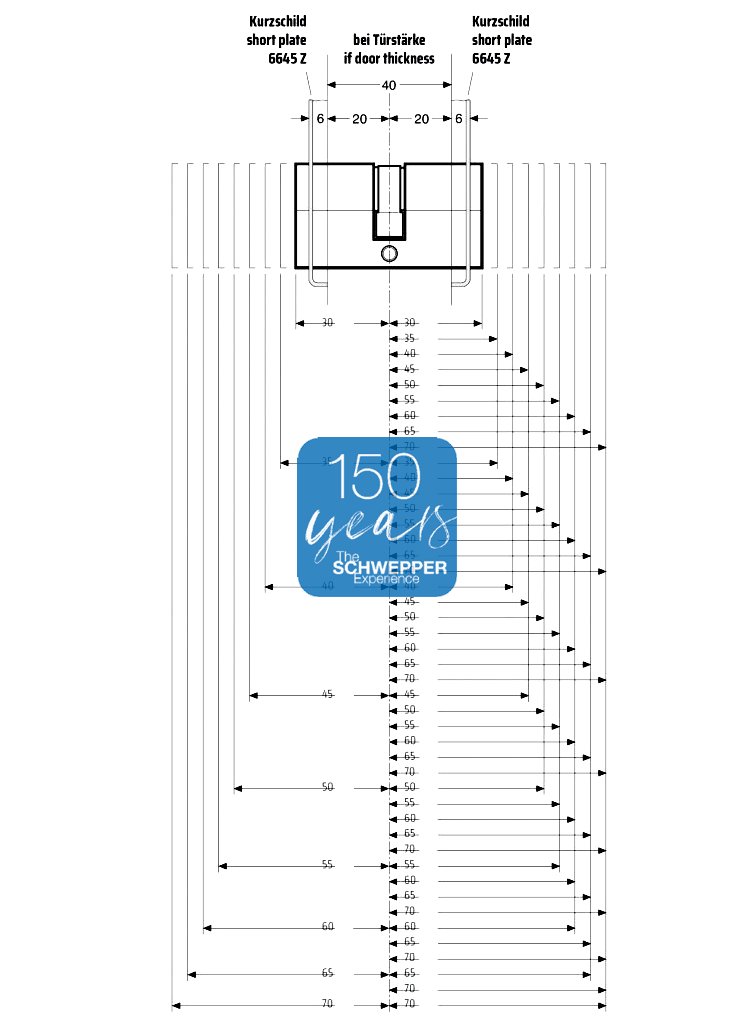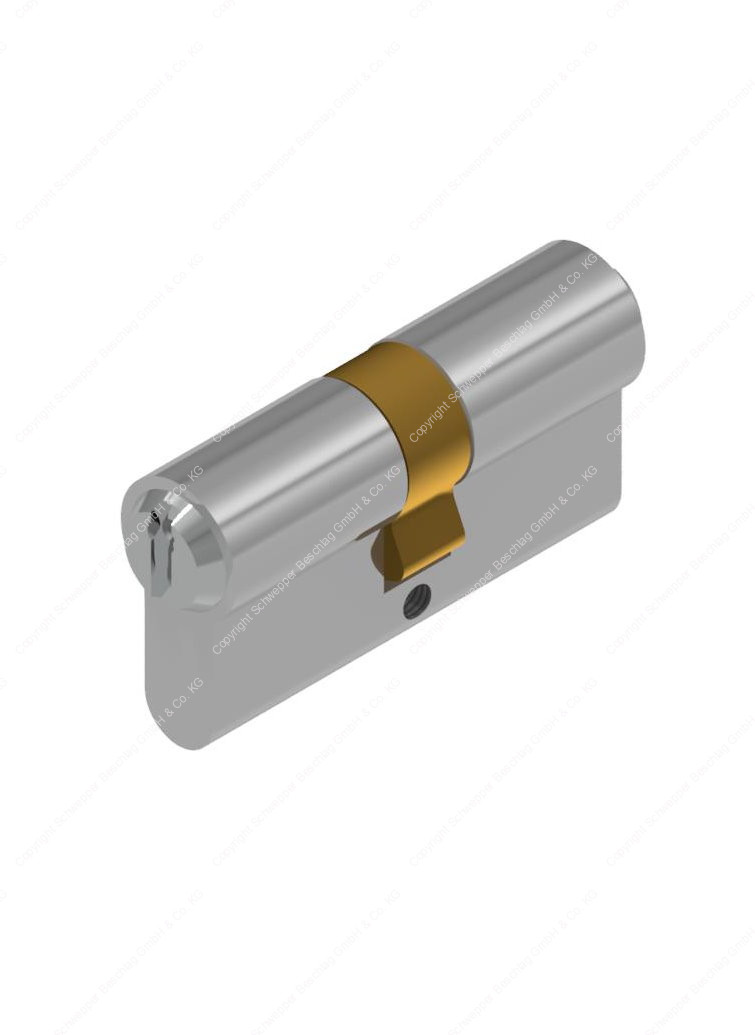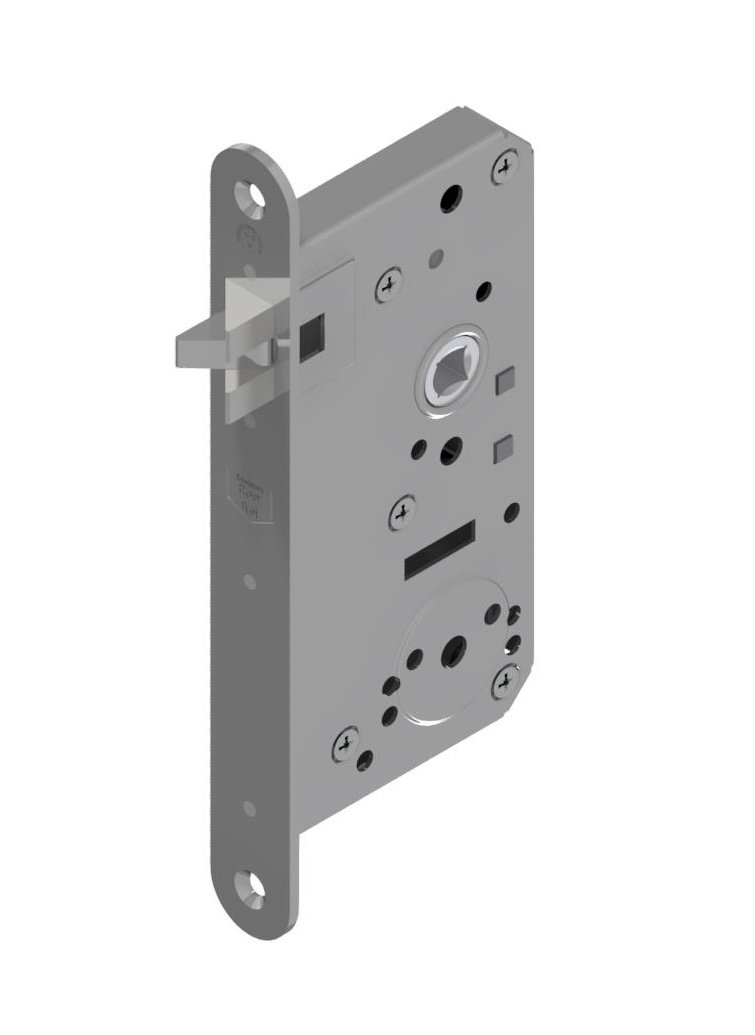
Mortise latch lock latch protrusion 14mm with antivibration latch complete stainless steel | GSV-No. 3811 F
18. April 2021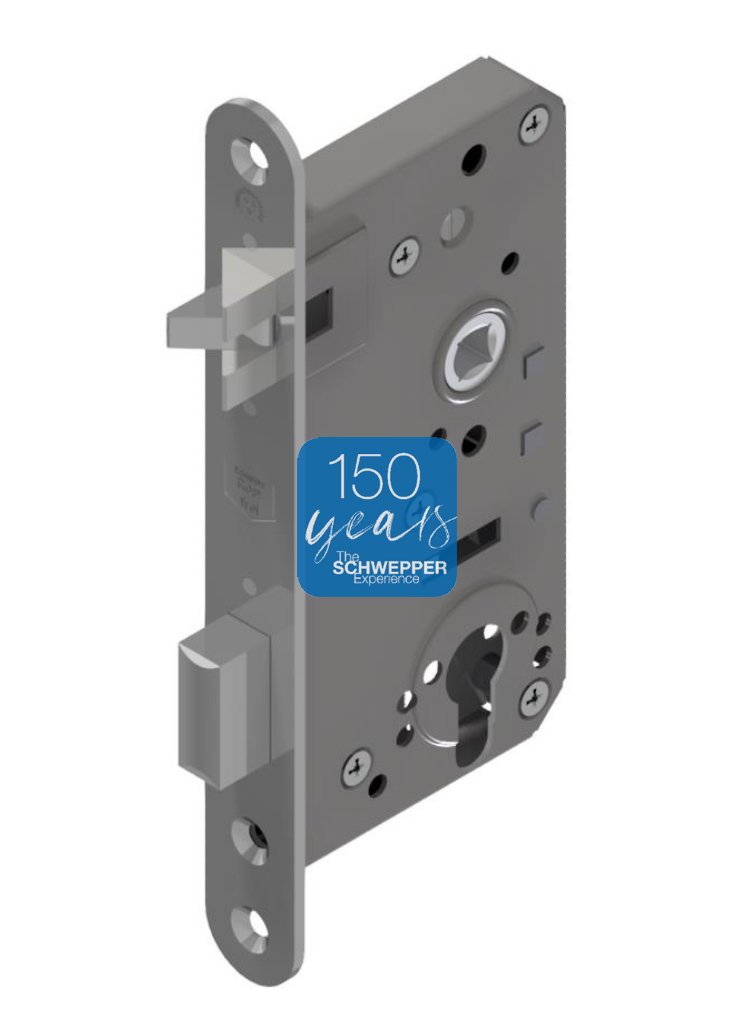
Mortise lock for cylinder latch protrusion 14mm with antivibration latch complete stainless steel | GSV-No. 3811 Z
18. April 2021Mortise lock Anti-Panic | Emergency door opening for cylinder with antivibration latch complete stainless steel (304) anty piracy on board (ISPS) | GSV-No. 3811 APZ
SKU: 3811 APZ
Standard product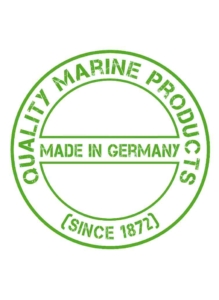

The mortise lock Anti-Panic for cylinder with anti-vibration latch (GSV No. 3811 APZ) is a highly secure door locking solution, specifically designed for use in emergency situations. Made from high-quality stainless steel (A2), this lock ensures long-lasting durability and excellent corrosion resistance, making it reliable even in demanding environments or damp areas.
A key feature of this lock is its integrated panic function, which allows for quick and easy evacuation in emergencies. In the event of a fire, natural disaster, or other threat, the panic function ensures that the door can be opened with a single motion, without the need for a key or special tools. This is critical to ensure that people can escape quickly and without unnecessary delays in panic situations.
The door can be unlocked by turning the internal lever or push bar, making access from the inside easy at all times. Regardless of the exterior lock status, the panic function is always accessible, ensuring unobstructed egress. Additionally, this lock is not compatible with knob cylinders, making it ideal for specific security applications.
The mortise lock is supplied without a cylinder and strike plate, allowing flexible adaptation to existing security requirements. With pirate protection in accordance with the ISPS (International Ship and Port Facility Security Code), it is also suitable for use on ships and in port facilities, meeting international security standards.
| Weight | N/A |
|---|---|
| Produktklasse | |
| HS-Code | |
| Produkttyp | |
| Produkteinsatzbereich | A-door (Fire protection), B-door, C-door, Doors industrial shipbuilding standard, Doors ISPS | Anti-Piracy, Entrance doors for wind towers |
| Handelseinheit |
Due to the general shortage of skilled workers, there are still delays in our manufacturing process. We are continually working on solutions and have been able to make slight improvements. Therefore, all stated delivery dates are subject to reservation.
Brass:
• The general delivery time for products in brass satin chromed is currently 6-8 weeks
• The general delivery time for products in brass polished / brass polished chromed is currently 8-10 weeks
Stainless Steel:
• The general delivery time for products in stainless steel is currently 6 weeks
• The general delivery time for products in stainless steel polished / fine grind is currently 6-8 weeks
Aluminum:
• The general delivery time for products in Aluminum silver andodized is currently 6 weeks
• The general delivery time for products in Aluminum powder coated is currently 6-8 weeks
Special/project products:
No standard delivery time, as components are only made to order. In each case by individual arrangement
 Note on express dispatch | 24 delivery service
Note on express dispatch | 24 delivery service Each item with a stock quantity can be dispatched within 24 hours. The surcharge for the 24h delivery service is 5%.
The 2° incline is specified by the shipbuilding norm DIN
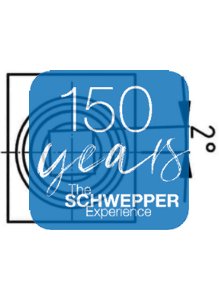
Our products do not contain the following chemical hazardous substances:
Asbestos
Polychlorinated biphenyls (PCBs)
Chlorofluorocarbons (CFCs)
Halons
Carbon tetrachloride
1-1-1-Trichloroethane
Hydrochlorofluorocarbons
Hydrobromofluorocarbons
Methyl bromide
Bromochloromethane
Anti-fouling systems containing organotin compounds as a biocide
Cadmium and cadmium compounds
Hexavalent chromium and hexavalent chromium compounds
Lead and lead compounds larger 3%
Mercury and mercury compounds
Polybrominated biphenyl (PBBs)
Polybrominated dephenyl ethers (PBDEs)
Polychloronaphthalenes (Cl >= 3)
Radioactive substances
Certain shortchain chlorinated paraffins
Perfluorooctane sulfonic acid (PFOS)
Brominated Flame Retardant (HBCDD)
The hand of door for mortise locks is defined as:
if the door is closed and the hinges are visible on the right/left, then the door is right/left hand. The door is therefore hinged on the right/left and according by definition of DIN right/left.
Or: if you grasp the handle with your right hand and latch and deadbolt show to the left, then it is right hand. If you grasp the handle with your left hand latch and deadbolt show to the right, it is a left hand.

Rim locks
The hand of door for rim locks is defined as:
if the door is closed and the hinges are visible on the right/left, then the door is right /left hand. The door is therefore hinged on the right/left and according to the definition DIN “right/left".
In addition to the designation “left” and “right”, it is to be indicated whether the locks are intended for inward or outward opening doors.

Sliding door mortises
The hand of door for sliding door mortises is the same for right and left. Sliding rim door locks different for left and right doors.
When ordering, always indicate “left” or “right”.

| Latch
The lock latch keeps the door shut. In order to open the door, it must be retracted. |
| Type of latch design | Illustration |
| single latch | 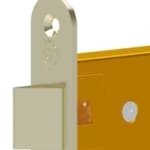 |
| anti-vibration or three-piece latch |  |
| rolling latch adjustable |  |
| POM-latch for strike dampening |  |
| Deadbolt
The deadbolt regulates the access rights through the turning motion of the cylinder by key. The deadbolt is being driven out or retracted through the turning motion. |
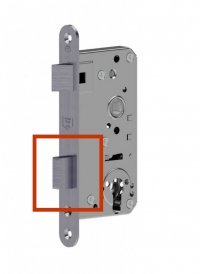 |
| Faceplate
The faceplate is the visible part of the lock case. The faceplate, the latch and the deadbolt are the only visible parts of a mortise. |
 |
Handle hub
The handle hub takes the square spindle of the handle in order to retract the latch inside the lock through the turning motion of the same. This process allows the opening of the door. The shipbuilding norm specifies a 9mm square with a 2° incline. Schwepper supplies also with 8mm square, special contour or 0° incline on request. |
 |
WC-/privacy hub
The WC hub takes the square spindle of the olive or thumb turn, that retracts or drives out the deadbolt from the inside - analogue to the turning motion of the cylinder. The shipbuilding norm specifies a 7mm square. Schwepper supplies also with 8mm square on request. |
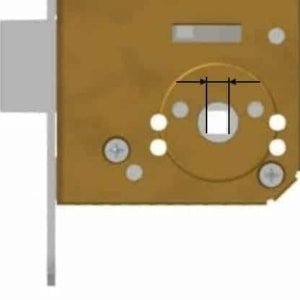 |
| Dimension | Illustration | |
| Backset
The backset is the distance from the front edge of the faceplate to the center of the cylinder hole respectively handle hub square. The rear backset behind the center line remains always 27mm. |
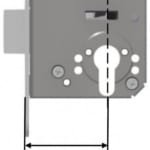 |
|
| Distancing
The distancing is the dimension from the center of the handel hub and the center of the hole for profile cylinder / privacy (WC) / key. The industry standard in shipbuilding is 75mm. |
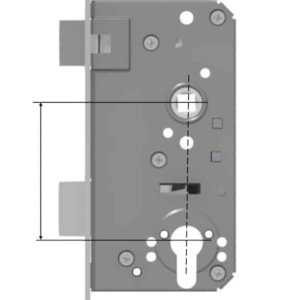 |
|
| Latch protrusion
The latch protrudes according to the industrial DIN standard in shibuilding 14mm. Other technical standards for latch protrusion are: 16 mm according to DOT (Department of Transportation) 19 mm according to USCG (US Coast Guard) |
 |
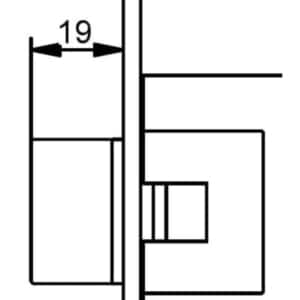 |

